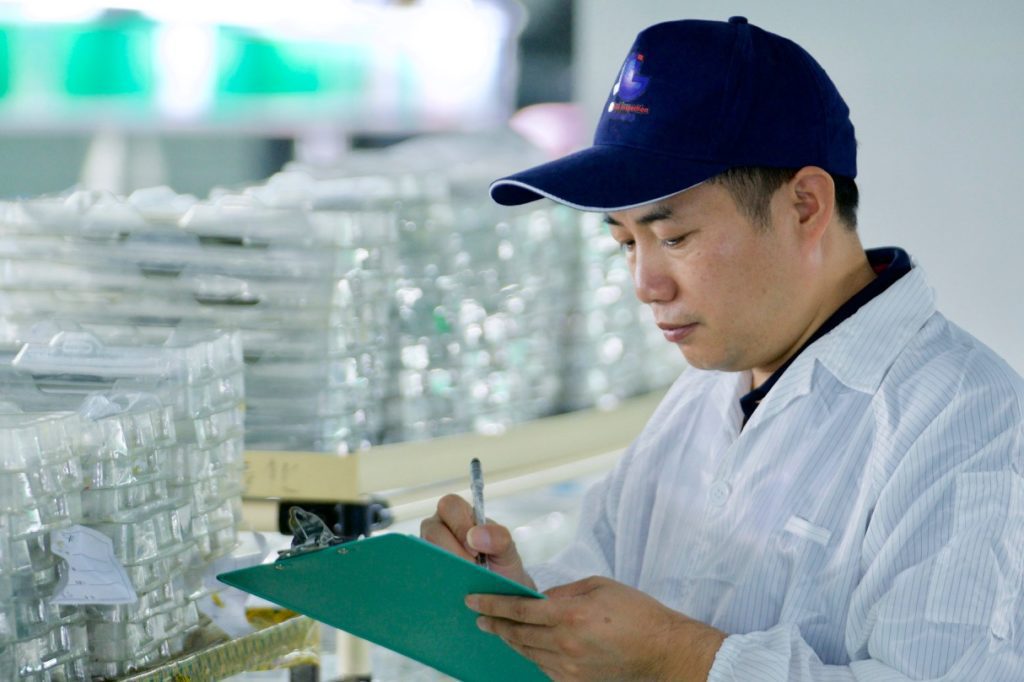Ensuring the quality and safety of meat and poultry is a critical concern in the food industry. As consumers place an emphasis on health and well-being, it becomes paramount for producers to implement stringent quality control checks at various stages of production.
What is Quality Control in Meat and Poultry?
Quality control in poultry production as well as the meat industry refers to a comprehensive set of practices, procedures, and protocols that are designed to ensure the safety, consistency, and overall quality of meat and poultry products throughout the entire production process. This involves continuous monitoring, assessment, and management of various factors to minimize the risks associated with contamination, spoilage, and other quality-related issues.
At its core, quality control is not just about meeting regulatory standards; it is about delivering products that meet or exceed consumer expectations for safety, taste, texture, and nutritional value. The aim is to create a level of confidence among consumers that the meat and poultry products they purchase are safe to eat and of the highest possible quality.
The Role of Quality Control in Meat and Poultry
- Contamination Prevention: One of the primary objectives of quality control is to prevent contamination of meat and poultry products. Contaminants can arise from various sources, such as microbial pathogens, chemical substances, allergens, and foreign objects. Quality control measures focus on identifying potential sources of contamination, implementing preventive measures, and conducting regular checks to ensure that contamination risks are minimized.
- Consistency and Uniformity: Quality control strives to achieve uniformity in product characteristics, such as size, shape, color, and texture. This consistency enhances the consumer’s experience and ensures that products meet the expected standards from batch to batch.
- Hazard Identification and Management: Quality control involves conducting hazard analyses to identify potential risks at different stages of production. These hazards can encompass biological, chemical, and physical factors that could compromise the safety and quality of the products. Once hazards are identified, appropriate measures are put in place to manage and mitigate those risks.
- Process Monitoring: Quality control monitors various parameters during processing, such as temperature, humidity, and time, to ensure that products are handled, stored, and processed under optimal conditions. Monitoring these factors helps prevent the growth of harmful microorganisms, spoilage, and the development of off-flavors.
- Traceability and Documentation: Quality control practices emphasize the importance of traceability. This involves accurately documenting the journey of each batch of meat or poultry from farm to table. Traceability aids in identifying the source of any issues that may arise and facilitates targeted recalls, if necessary.
- Validation and Verification: Quality control incorporates validation and verification procedures to ensure that the established control measures are effective and consistently applied. Validation involves demonstrating that specific processes or equipment can reliably achieve the desired outcomes. Verification involves regularly confirming that these processes are operating as intended.
- Product Testing: Quality control may involve laboratory testing of samples to assess parameters such as microbial load, chemical residues, and nutritional content. These tests provide quantitative data that help assess the safety and quality of the products.
- Training and Employee Awareness: Quality control extends to training employees at all levels in proper hygiene, sanitation, and handling practices. Educated and aware employees are crucial in maintaining the integrity of the products and preventing potential contamination.
- Continuous Improvement: Quality control is not a static process; it continually evolves to adapt to changing industry standards, consumer preferences, and emerging technologies. Regular assessments of processes and procedures are carried out to identify areas for improvement and implement necessary changes.
Why is Food Safety a Challenge in the Meat Industry?
Ensuring food safety in the meat industry is a complex endeavor due to several inherent challenges. These challenges arise from the nature of meat and poultry products themselves, as well as the intricacies of the production process and the global supply chain. Here are some of the key reasons why food quality control poses a significant challenge in this industry.
- Perishable Nature: Meat and poultry are highly perishable products that provide an ideal environment for the growth of microorganisms. Bacteria such as Salmonella, E. coli, and Listeria can multiply rapidly if proper handling and storage practices are not maintained. This perishability necessitates a swift and efficient production process to minimize the time between slaughter and consumption.
- Complex Supply Chain: The journey of meat and poultry products from farm to table involves multiple stages, including breeding, feeding, transportation, processing, and distribution. Each stage introduces potential points of contamination or mishandling. As products change hands and traverse long distances, maintaining consistent quality control becomes a challenge. An issue at any point in the supply chain can have cascading effects on the safety of the end product.
- Microbial Risk: The raw nature of meat and poultry makes them prone to contamination by harmful microorganisms. Livestock can carry bacteria naturally, which can transfer to the meat during slaughter and processing. Cross-contamination can occur if equipment, surfaces, or hands are not properly sanitized between tasks. This risk is amplified when large quantities of meat are being processed, as it increases the likelihood of unintentional contamination.
- Variability in Processing: The meat industry involves a wide range of products, from raw cuts to processed items like sausages and deli meats. Each type of product may require specific processing techniques, which introduces variability into the production process. This variability can affect factors such as cooking times and temperatures, potentially impacting the thorough elimination of harmful microorganisms.
- Temperature Control: Maintaining proper temperature control is crucial for preventing the growth of harmful bacteria. However, achieving consistent temperature control throughout the supply chain can be challenging. Temperature fluctuations during transportation, storage, or even in retail display cases can compromise the safety of the products.
- Consumer Preferences: Consumer demand for convenience has led to the development of ready-to-eat and pre-cooked meat products. While these products offer convenience, they also require additional processing steps that can increase the risk of contamination. Inadequate cooking of such products by consumers can also pose a health risk.
- Regulatory Complexity: The meat industry is subject to rigorous regulations and standards set by local and international authorities. Navigating this complex regulatory landscape requires constant vigilance and adherence to guidelines that may evolve over time. Non-compliance can result in severe consequences, including product recalls and legal action.
- Globalization and Imports: With the globalization of the food industry, meat and poultry products are often imported from different countries. Varying food safety standards and product inspection practices across borders can create gaps in ensuring consistent product quality and safety.
- Consumer Health Concerns: The rise of health-conscious consumers who demand natural, minimally processed, and organic products puts additional pressure on producers to maintain quality while meeting these preferences. Striking a balance between meeting consumer demands and ensuring food safety can be challenging.
Steps to Conduct Quality Control for Meat and Poultry Industry
- Conduct Hazard Analysis: The first step in quality control for meat and poultry testing involves a thorough analysis of potential hazards. This includes identifying biological, chemical, and physical hazards that could compromise the safety of the products.By pinpointing these hazards, producers can follow effective product quality inspection procedures to mitigate them.
- Establish Critical Limits: Critical limits are predetermined benchmarks that must be met at each stage of production to ensure safety and quality. For instance, temperature limits are established to prevent the growth of harmful bacteria. These limits act as checkpoints that guide the process and provide an early warning system if any parameter deviates from the acceptable range.
- Establish Corrective Actions: Despite stringent measures, deviations from critical limits may occur. Therefore, a robust system of corrective actions is crucial. When a parameter exceeds the established limit, predefined steps are taken to rectify the situation. This could involve adjusting processing conditions, rerouting the product, or conducting additional testing.
- Recordkeeping Procedures: Maintaining meticulous records is an integral part of quality control. Detailed documentation of each stage of production helps trace the journey of the product and ensures accountability. This documentation is invaluable in the event of a safety concern, as it aids in pinpointing the source of the issue and implementing corrective measures promptly.
- Verification: To ensure that quality control procedures are consistently effective, regular verification is essential. This involves independent reviews, audits, and testing to confirm that the established measures are functioning as intended. By periodically validating the processes, producers can identify areas for improvement and adjust their protocols accordingly.
Conclusion
At Global Inspection Managing, our unwavering commitment to excellence makes us the ideal partner for your meat and poultry quality control procedures. With a deep understanding of the challenges inherent in the industry, our dedicated team is equipped to navigate the complexities of production, supply chain intricacies, and regulatory standards. Our comprehensive approach encompasses every stage of the process, ensuring that your products meet the highest safety and quality standards. From hazard analysis to verification, we diligently apply our expertise to safeguard your products and uphold your reputation.
In an era where consumers are more conscious than ever about the origin and quality of their food, the meat and poultry industry must rise to the challenge of ensuring the safety and integrity of their products. Quality control checks, implemented at every stage of production, serve as the guardians of public health. From hazard analysis to verification, each step contributes to the overarching goal of providing safe, nutritious, and flavorful products to consumers worldwide.
As we navigate the complex landscape of food production, it is evident that quality control inspection is not just a regulatory requirement; it is a moral obligation to prioritize the well-being of those who consume our products. The challenges posed by microbial risks and supply chain intricacies necessitate a comprehensive approach that leaves no room for complacency. By embracing the stages of quality control checks for meat and poultry, producers stand as stewards of food safety, enriching lives one meal at a time.

